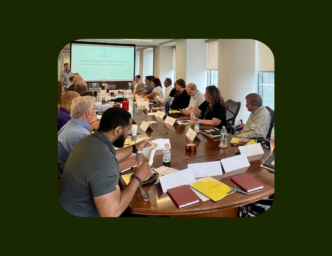Written by Bert Bean, originally published on Forbes.
Waste is the killer of the bottom line. Every business leader knows that. The more waste you have in an organization, the harder it is to grow your bottom line. So, the all-important question to the CEO becomes, “How do you reduce waste?” Notice I said “reduce.” Eliminating it altogether is a fantasy. There are a lot of areas leaders can look to when it comes to reducing waste. Needless expenses, unused office space (relevant now more than ever) or products and services that are out of alignment with a company’s purpose are all great places to start reducing waste. But there’s one contributor of waste that rules them all: The waste of lost employee productivity.
In some senses, an employee’s capacity for production is like time. You can’t store it up and you can’t stop it. You use or lose it. However, you can manage it in a way that maximizes positive results. Think about it like this: Laziness squanders time, but focused work makes good use of time. Employee productivity (or lack thereof) is much the same way. Poor employee productivity is much like waste, as it drags on the bottom line. However, high employee productivity is like rocket fuel for a company. It gives lift to everything and everyone. The employees feel it, management feels and, most of all, the customer feels it. That’s why we like buying goods or services from places where we say, “I like that person. I love how they treat me.” So that settles it then. How do you maximize employee productivity?
First, engagement. Then, alignment. Employee engagement is such a big deal that many companies actually plan for losses in revenue from things like Cyber Monday or March Madness because they know their employees are not engaged at work during those times. Well, I guess they’re engaged — just not in the tasks they get paid for at work. Think about it yourself. How often are you engaged at work? 90% of the time, 75%, 40%? It’s okay, I won’t tell if you won’t. Regardless of your steady state of engagement, think about times at work you’ve been over 90% engaged. This is when you’re fully locked in. It’s when you’re producing your best work. It’s also when your employer is reaping the maximum value of your production. If that sounds a little icky to you, that’s okay. It’s probably because while you might be engaged, you aren’t aligned.
Alignment with a company’s values and goals is the holy grail of what every CEO is seeking. Employees who are merely engaged often don’t stay that way for long. In my experience, nothing causes burnout faster. It’s just too hard. It becomes easy to ask, “What’s the point?” and get back to updating your fantasy football team. But engaged and aligned? That is special. Now, as the employee, I will not only give my best every day, but I will keep doing it because I’m in alignment with my company’s values, purpose and goals, and I see how my work contributes directly to those things. Now, I don’t need anyone standing over my shoulder urging me on every day. Now, I will produce at an infinite level. More than that, I will multiply my production as I look to my right and left to assist my teammates. I will also help my company get better as I notice areas of the business to improve that only I can see. A CEO with a company full of engaged and aligned employees is a happy one. She will start to see results beyond her (or her shareholders’) wildest dreams. This is a fact.
However, engagement and alignment, which increase employee productivity and drive out waste, don’t happen by accident. They are a very direct result of a company’s culture. Business leaders who are not intentional about creating their culture will always miss the point. Few will ever make it. They will walk away frustrated. They will blame everything from their competitors to the industry or my favorite, “those lazy millennials.” Culture is everything. It is the connective tissue that binds us all together within a company. To say it differently, a company’s culture is the summation of habits around the things people value. And it works for good and for bad. If people value gossip and laziness, then you’ll have a culture of backstabbing and missing goals. (P.S. That culture creates a lot of waste.) However, if people value taking care of others and personal development, then you’ll have a growth mindset culture that’s focused on doing good internally and externally. They’ll overcome any obstacle together because they believe.
There are few things more important than a company’s culture. As a company leader, if you don’t get it right, you have no chance to succeed. I mean that.
CEOs should spend most of their time thinking about the culture of the organization and whether it is moving closer or further away from the values and purpose the company holds dear. And if you don’t exactly know what your values and purpose are, chances are your culture has already figured them out and has formed around them. If they aren’t the right values, no worries, you can change them, but it will take a firm stand by you. You will need to be the one to set the tone, in constant speech and in constant action. It’s also not as hard as it seems. I believe most people want to show up, work toward a goal they believe in and be productive. But they need a culture that inspires it. And when it does, the bottom line takes care of itself.


 by Insight Global Staff
by Insight Global Staff



 by Erin Ellison
by Erin Ellison 
